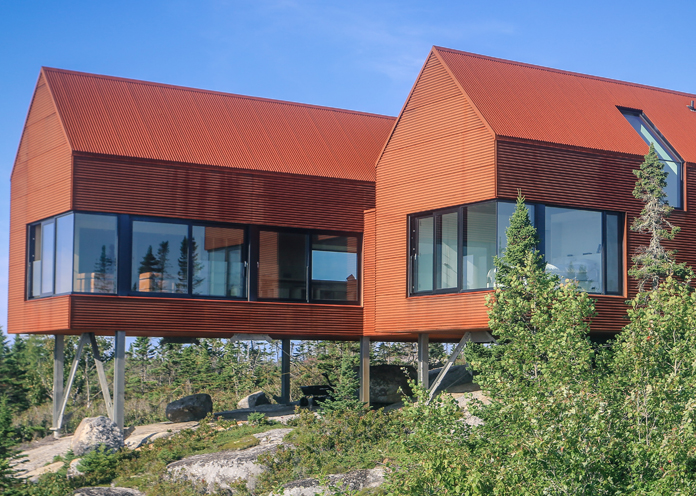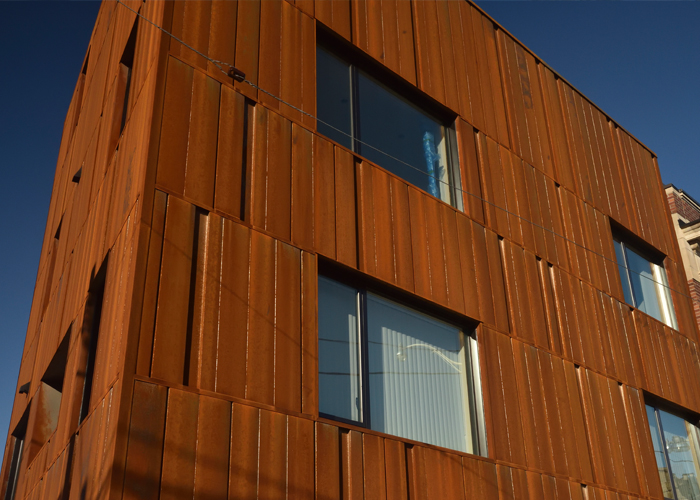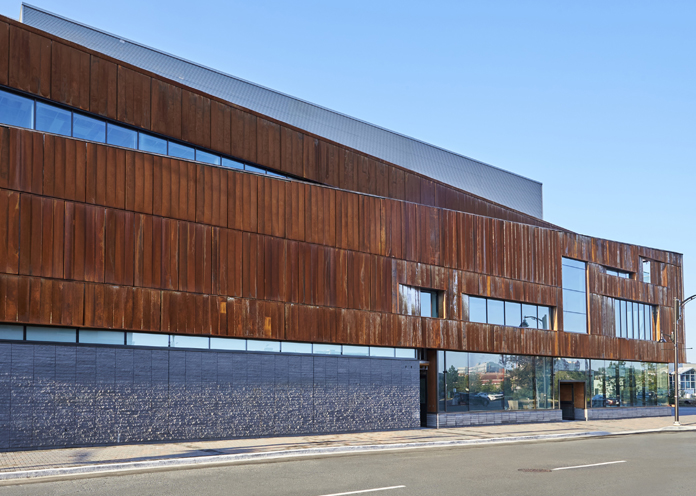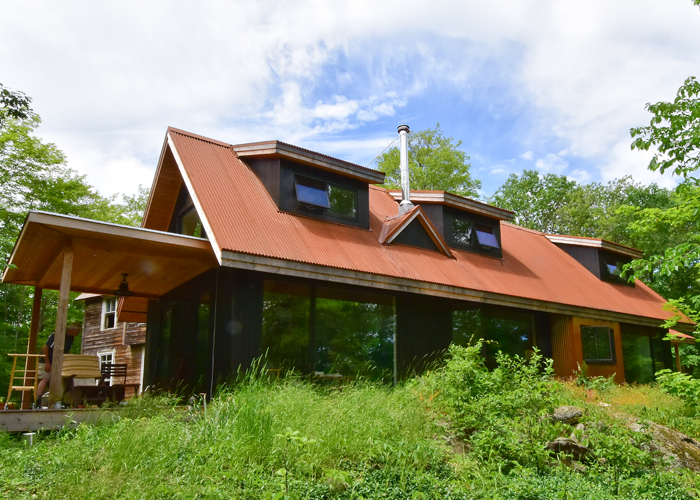Indaten™
Indaten™ Weathering Steel. A Perfect Blend of Strength and Raw Beauty
Weathering steels are versatile and intended for exterior building use in façades or roof applications seeking the modern concept that architecture and infrastructure should blend with natural and urban landscapes. In both new and refurbishment projects, weathering steels create an innovative and unique aspect. Weathering steel for cladding can be shaped into a wide range of geometries, including roll formed and single sheet panels.
Using decades of experience with corrosion resistance mechanisms, ArcelorMittal has developed a cold rolled weathering grade known as Indaten™ for steel building panels that will satisfy the requirements of ASTM A606 Type 4.
Development of the Patina
A unique aspect of weathering steels is the exposed surface changes over time. It transitions from its initial dark grey mill finish to an orange patina in a matter of weeks. The patina continues to evolve, reaching its final dark brown colour after several years – dependent on local weather conditions. Its distinct brownish, non-uniform patina, with coarse texturing, means weathering steel will integrate perfectly into both urban and natural environments.
For the best results weathering steels must be exposed to alternating wet/dry cycles, with no permanent wet or damp conditions, such as contact with stagnant water, constant humidity, sheltered damp locations, soil or covered by vegetation. Aggressive atmospheres, such as distances within two kilometres of coastal waters, should be avoided as the high concentrations of chlorides are detrimental to the patina layer leading to an increased rate of corrosion. Atmospheric pollution and industrial fumes, particularly sulfur dioxide, will also negatively affect the patina and increase the corrosion rate.
During patina formation on weathering steel, small amounts of corrosion products (rust) are washed out by rainfall. The amount of corrosion product leached out by rainfall diminishes over time, but never stops completely and can lead to staining of neighbouring material. Special design considerations for the structure are needed to ensure that any discoloured rainwater is properly collected and directed away from exposed surfaces. The corrosion product consists mainly of stable iron oxide which is not harmful to the environment, vegetation or wildlife.






